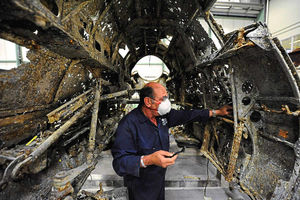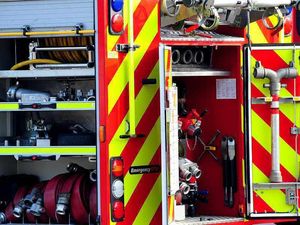Dornier restoration to be unveiled to public at RAF Cosford
The world's last surviving example of a wartime fighter plane, which was raised from the bottom of the sea, will be unveiled in its new home at RAF Cosford tomorrow.

Visitors to RAF Museum Cosford will be able to see how work is coming on with the painstaking restoration of the Dornier Do 17, which has just moved into the second phase of its conservation.
More than 1,500 examples of the Dornier 17 medium bomber were built.
Its twin-engine, twin-fin configuration, together with the narrow fuselage and shoulder-mounted engines, gave the aircraft a distinctive silhouette and earned it the nickname "The Flying Pencil".

The rare German wartime bomber was discovered on the Goodwin Sands, 70 years after it was shot down in the Battle of Britain
It is the worlds only surviving Do-17
Research by the Air Historical Branch and RAF Cosford suggests it is Do-17-Z2 Ser No 1160 of 7/III/KG3 (5K + AR)
It was part of a large enemy formation intercepted by RAF fighter aircraft on August 26,1940
Pilot Willi Effmert attempted a wheels-up landing on Goodwin Sands
He touched down safely and the aircraft sank inverted. He and his observer were captured but the other crewmen died.[/breakout]
More than 400 were employed by the Luftwaffe during the Battle of Britain in the Second World War.




